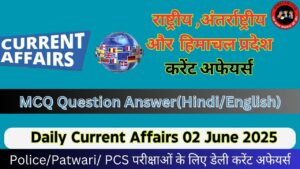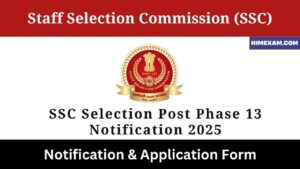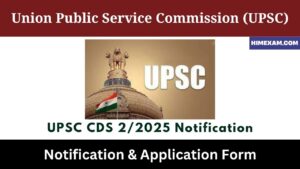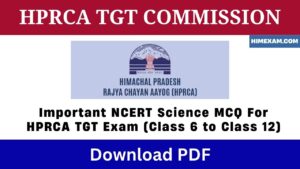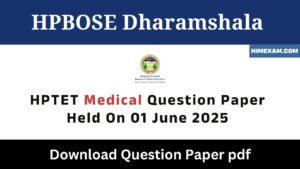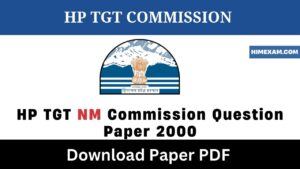Partition of India and Independence MCQ Question Answer In English
||Partition of India and Independence MCQ Question Answer In English||Partition of India and Independence Question Answer In English||
1. The British Government decided and declared to leave India by June, 1948 in
(A) 1946
(B) February, 1947
(C) April, 1947
(D) June, 1947
2. The British Monarch at the time of Indian Independence was
(A) George V
(B) George VI
(C) King Edward VII
(D) None of the above
3. Which one of the following parties was in power in U.K. when India got independence?
(A) Conservative Party
(B) Labour Party
(C) Liberal Party
(D) Socialist Party
4. Who was the Prime Minister of England when India attained independence?
(A) Winston Churchill
(B) Clement Attlee
(C) Harold Mc Millan
(D) None of the above
5. Lord Mountbatten came to India as a Viceroy alongwith specific instruction to
(A) Balkanize the Indian sub-continent
(B) Keep India United if possible
(C) Accept Jinnah’s demand for Pakistan
(D) Persuade the Congress to accept partition
6. Which plan became the platform of Indian Independence?
(A) Cripps Plan
(B) Wavell Plan
(C) Mountbatten Plan
(D) None of the above
7. The Mountbatten Plan became the basis for
(A) Continuity of British Rule
(B) Transfer of power
(C) Partition of the country
(D) Solution of communal problems
8. Mountbatten Plan (June 1947) provided for a referendum in which of the following province(s)?
(A) Sindh
(B) Baluchistan
(C) North-West Frontier Province
(D) All of the above
9. The British Parliament passed the Indian Independence Act in
(A) January, 1947
(B) July, 1947
(C) August, 1947
(D) August, 1946
10. The Indian Independence Act, 1947 came into force on
(A) 4 July, 1947
(B) 10 July, 1947
(C) 18 July, 1947
(D) 14 August, 1947
11. The formula for transfer of sovereignty to India in 1947 was known as
(A) Durand Plan
(B) Morely-Minto Reforms
(C) Mountbatten Plan
(D) Wavell Plan
12. ‘Mountbatten Plan’ regarding the partition of India was officially declared on
(A) 04 June, 1947
(B) 10 June, 1947
(C) 03 July, 1947
(D) 03 June, 1947
13. The Indian Independence Bill received the Royal Assent on
(A) 18th July, 1947
(B) 19th July, 1947
(C) 20th July, 1947
(D) 21st July, 1947
14. The Balkan Plan for fragmentation of India was the brain child of
(A) W. Churchill
(B) M.A. Jinnah
(C) Lord Mountbatten
(D) V.P. Menon
15. The Indian National Congress agreed in 1947 to the partition of the country mainly because
(A) The principal of Two-nation Theory was then acceptable to them
(B) It was imposed by the British Government and the Congress was helpless in this regard
(C) They wanted to avoid largescale communal riots
(D) India would have otherwise lost the opportunity to attain freedom
16. As an alternative to the partition of India, Gandhiji suggested to Mountbatten that he
(A) Postpone granting of independence
(B) Invite Jinnah to form the Government
(C) Invite Nehru and Jinnah to form the Government together
(D) Invite the army to take over for sometime
17. The Radcliffe Committee was appointed to
(A) Solve the problem of minorities in India
(B) Give effect to the Independence Bill
(C) Demarcate the boundaries between India and Pakistan
(D) Enquire into the riots in East Bengal
18. Who headed the Boundary Commission appointed in 1947 in the context of India’s partition?
(A) Mountbatten
(B) Radcliffe
(C) James Bolt
(D) Richardson
19. The last opportunity to avoid the partition of India was lost with the rejection of
(A) Cripps Mission
(B) Rajagopalachari Formula
(C) Cabinet Mission
(D) Wavell Plan
20. Who among the following was the Chairman of the Congress Session of Delhi wherein resolution of divided India was passed on 14 June, 1947?
(A) Rajendra Prasad
(B) Vallabhbhai Patel
(C) Acharya J.B. Kripalani
(D) Jawaharlal Nehru
|Partition of India and Independence MCQ Question Answer In English||Partition of India and Independence Question Answer In English||
21. Who among the following had seconded the resolution on the partition in the meeting of All India Congress Committee held in New Delhi in 1947?
(A) Govind Ballabh Pant
(B) Sardar Vallabhbhai Patel
(C) J.B. Kripalani
(D) Abul Kalam Azad
22. Who of the following took the passing of a resolution on the partition in the meeting of the Congress Committee (1947) as a ‘Surrender of Nationalism in favour of Communalism’?
(A) Dr. Kitchlew
(B) Purushottam Das Tandon
(C) Jawaharlal Nehru
(D) G.B. Pant
23. Who presided over the Delhi Session of Indian National Congress in 1947?
(A) J.B. Kripalani
(B) Rajendra Prasad
(C) Abul Kalam Azad
(D) Jawaharlal Nehru
24. In the meeting of All India Committee on 14 June, 1947; who among voted against the partition of India?
(A) Abul Kalam Azad
(B) Khan Abdul Gaffar Khan
(C) Sardar Patel
(D) Govind Ballabh Pant
25. Which of the following assumed sovereign power at midnight of 14/15 August, 1947 provisionally?
(A) Central Legislative Assembly
(B) Constituent Assembly
(C) Interim Government
(D) Chamber of Princes
26. Who sang ‘Hindustan Hamara’ of Iqbal and ‘Jan-gan-man’ in the Central Assembly at midnight of 14/15 August, 1947?
(A) Rameshwari Nehru
(B) Meera Ben
(C) Sucheta Kriplani
(D) M.S. Subbulakshmi
27. Who appointed the first Prime Minister of India?
(A) Governor General
(B) British Emperor
(C) Mahatma Gandhi
(D) Viceroy
28. Who was the first Governor General of Independent India?
(A) C. Rajagopalachari
(B) Warren Hastings
(C) Lord Dalhousie
(D) Lord Mountbatten
29. Who was the last Governor-General of Independent India?
(A) C. Rajagopalachari
(B) Rajendra Prasad
(C) Lord Mountbatten
(D) Lord Canning
30. The first Indian to hold office as Governor-General of independent India was
(A) Rajagopalachari
(B) Surinder Nath
(C) Dr. Rajendra Prasad
(D) B.R. Ambedkar
31. The first and last Indian GovernorGeneral of India was
(A) R.M. Gopala
(B) Dr. S. Radhakrishnan
(C) C. Rajagopalachari
(D) Ramanuja Acharya
32. Last Viceroy of India was
(A) Lord Wavell
(B) Lord Mountbatten
(C) Lord Linlithgow
(D) Achinlake
33. Who among the following was the first Law Minister of India?
(A) M.C. Sitalwad
(B) Dr. B.R. Ambedkar
(C) Kailash Nath Katju
(D) Rafi Ahmad Kidwai
34. Which one of the following is the correct sequence of persons who occupied the office of the President of India right from beginning?
(A) C. Rajagopalachari, Rajendra Prasad, Zakir Hussain, V.V. Giri
(B) Rajendra Prasad, S. Radhakrishnan, V.V. Giri, Zakir Hussain
(C) C. Rajagopalachari, Rajendra Prasad, S. Radhakrishnan, Fakhruddin Ali Ahmad
(D) Rajendra Prasad, S. Radhakrishnan, Zakir Hussain, V.V. Giri
35. Who represented the Indian National Congress in the Partition Council headed by Lord Mountbatten?
1. Abul Kalam Azad
2. Jawaharlal Nehru
3. Sardar Patel
4. Rajendra Prasad
Select the correct answer from the code given below.
(A) 1 and 2
(B) 2 and 3
(C) 3 and 4
(D) 1 and 4
36. The President of Indian National Congress at the time of partition of India was
(A) C. Rajagopalachari
(B) J.B. Kripalani
(C) Jawaharlal Nehru
(D) Maulana Abul Kalam Azad
37. Who among the following was the President of the Indian National Congress on 15th August, 1947?
(A) Rajendra Prasad
(B) Jawaharlal Nehru
(C) J.B. Kripalani
(D) Sardar Patel
38. Who presided over the 1946 Session of the Indian National Congress held at Meerut?
(A) J.B. Kripalani
(B) Maulana Abul Kalam Azad
(C) Dr. Rajendra Prasad
(D) B. Pattabhi Sitaramayya
39. Who was the Congress President at the time of transfer of power in 1947 to India by the British?
(A) Jawaharlal Nehru
(B) Rajendra Prasad
(C) Abul Kalam Azad
(D) J.B. Kripalani
40. In August 1947, who of the following leaders did not participate anywhere in Independence Day celebrations?
(A) Jawaharlal Nehru
(B) Mahatma Gandhi
(C) Vallabhbhai Patel
(D) Rajendra Prasad
|Partition of India and Independence MCQ Question Answer In English||Partition of India and Independence Question Answer In English||
41. 26 January, 1950 had chosen for the enforcement of the Constitution because
(A) This was an auspicious day
(B) ‘Quit India Movement’ was begun on this date in 1942
(C) Congress had celebrated 26 January, 1930 as the first Independence Day
(D) None of the above
42. ‘Indian Nationalism was the child of the British Rule’. Who made this statement?
(A) Bipin Chandra
(B) R. Coupland
(C) R.C. Majumdar
(D) P.E. Roberts
43. Who among the following said that ‘the most notable achievement of the British Rule was the unification of India’?
(A) K.M. Panikkar
(B) M.N. Srinivas
(C) Rajni Kothari
(D) Yogendra Singh
44. Assertion (A): Britain made India free in 1947.
Reason (R): Britain had become weak during the second World War. In the context of the above two statements, which of the following is/are correct?
(A) Both (A) and (R) are true and (R) is the correct explanation of (A)
(B) Both (A) and (R) are true, but (R) is not the correct explanation of (A)
(C) (A) is true, but (R) is false
(D) (A) is false, but (R) is true
45. Given below are two statements, one labelled as Assertion (A) and the other labelled as Reason (R). Assertion (A): The British sovereignty continued to exist in free India.
Reason (R): The British sovereign appointment the last Governor General of free India.
In the context of the above two statements, which one of the following is correct?
Code
(A) Both (A) and (R) are true and (R) is the correct explanation of (A)
(B) Both (A) and (R) are true, but (R) is not the correct explanation of (A)
(C) (A) is true, but (R) is false
(D) (A) is false, but (R) is true
46. Assertion (A): The Indian National Congress accepted the Mountbatten plan.
Reason (R): It believed in twonation theory.
Select the correct answer from the code given below.
(A) Both (A) and (R) are true and (R) is the correct explanation of (A)
(B) Both (A) and (R) are true, but (R) is not the correct explanation of (A)
(C) (A) is true, but (R) is false
(D) (A) is false, but (R) is true
|Partition of India and Independence MCQ Question Answer In English||Partition of India and Independence Question Answer In English||
Answer Sheet1. (B) 2. (B) 3. (B) 4. (B) 5. (B) 6. (C) 7. (C) 8. (D) 9. (B) 10. (C) 11. (C) 12. (D) 13. (A) 14. (C) 15. (C) 16. (B) 17. (C) 18. (B) 19. (C) 20. (C) 21. (D) 22. (A) 23. (A) 24. (B) 25. (B) 26. (D) 27. (A) 28. (D) 29. (A) 30. (A) 31. (C) 32. (B) 33. (B) 34. (D) 35. (B) 36. (B) 37. (C) 38. (A) 39. (D) 40. (B) 41. (C) 42. (B) 43. (A) 44. (B) 45. (D) 46. (C)
Read More: – Himachal Pradesh General Knowledge

%20MCQ%20Question%20Answer%20In%20English%20(7).png)

